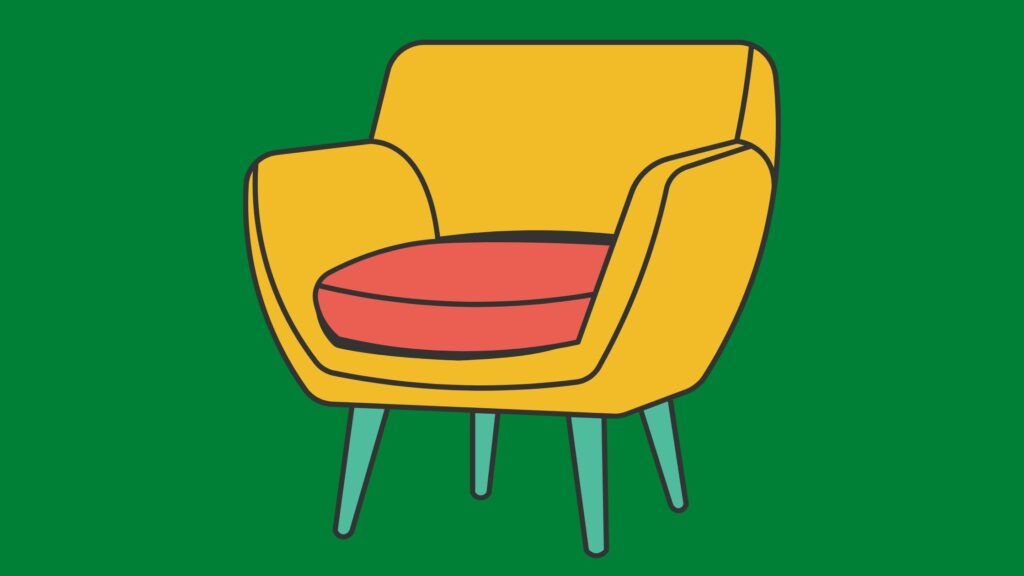
How to Write Measurements for Furniture
Furniture is measured (in the United States) in inches, fractions of an inch, feet, and millimeters.
Example: How to Measure the Dimensions of a Chair
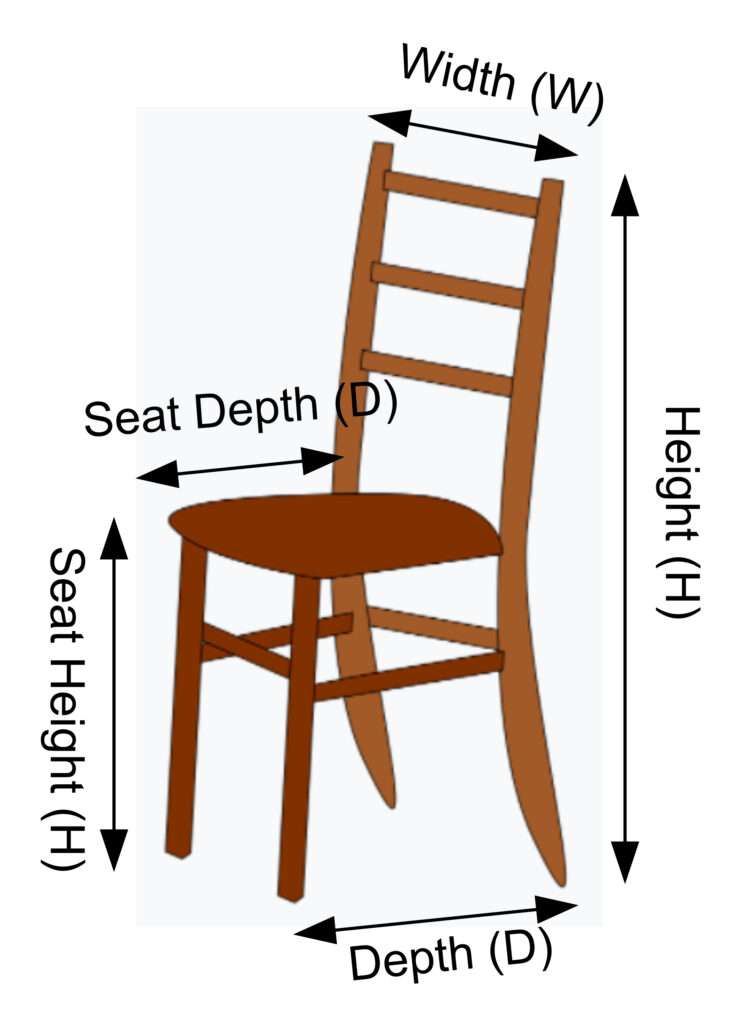
IMAGE CREDIT: Pk0001, CC BY-SA 4.0 <https://creativecommons.org/licenses/by-sa/4.0>, via Wikimedia Commons, Annotation by Ugur Akinci
For example, we can explain the dimensions of a chair that measures 34″ x 24 1/4″ x 33 3/8“as:
34x24x33
The first number is the depth (D) of the chair and it should be read as 34 inches deep.
DEPTH CAUTION — The seat depth can be different than the overall depth of the chair but in most cases, the seat depth and the overall depth will either be identical or the difference would be so small that it would be considered trivial and negligible for practical purposes.
The second number is the width (W) and it should be read as 24 1/4 inches wide.
WIDTH CAUTION — The seat width can be different than the overall width of the chair but in most cases, the seat width and the overall width will either be identical or the difference would be so small that it would be considered trivial and negligible for practical purposes.
The third number is the height (H) and it should be read as 33 3/8 inches high or tall.
HEIGHT CAUTION — The seat height will be different than the overall height of the chair but in most cases, the seat height is not reported and only the overall height of the chair will be reported or mentioned.
Finally, for fractions of an inch, it would be written 34 x 24-1/4 x 33-3/8.
Written by a master furniture maker, these measurements will help you when you are looking to buy furniture or need to create a custom piece.
WARNING — Remember, always measure twice (or even three times) to ensure accuracy!
Use the Right Tools
When measuring for furniture, it is important to use the right tools.
A Tape Measure
A tape measure is the most common tool used, but a ruler or metal measuring stick can also be helpful.
There are different types of tape measures. Here are some of them:
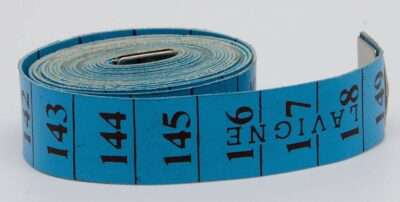
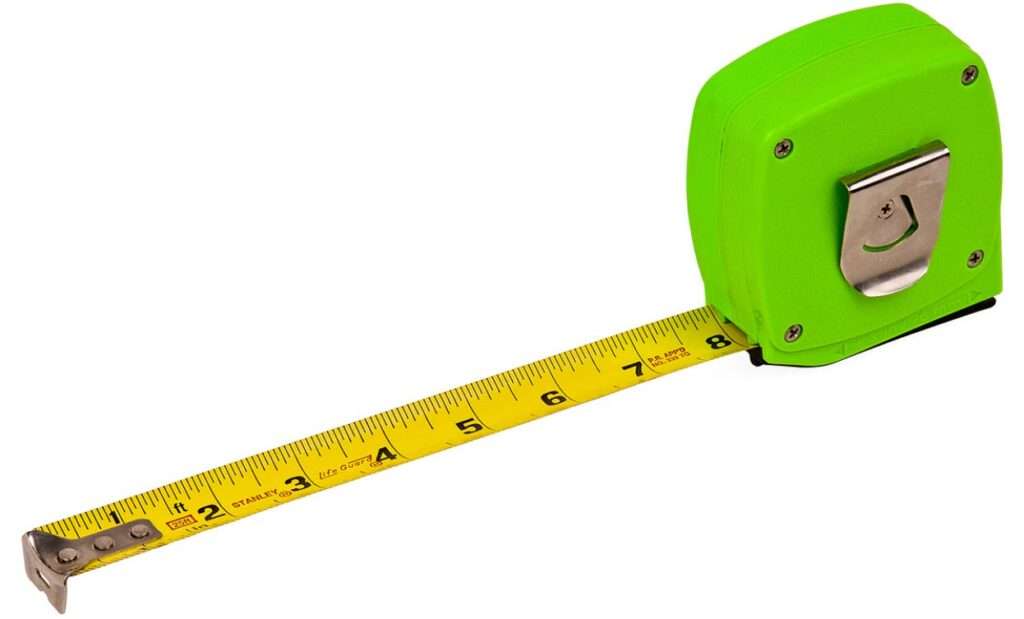
Check the Furniture Tag for Dimensions
Sometimes, a piece of furniture will have specific dimensions that are listed on the tag or in the product description. If these dimensions are available, it is best to use them as your measurements.
However, if no dimensions are given or you are creating a custom piece of furniture, you will need to measure the item yourself.
The Most common Units of Furniture Measurement in the United States
Inches
Used in furniture measurements, the inch is the most common unit of measurement. It is divided into 12 parts, called “inches.”
These small divisions can be helpful when measuring smaller items, such as drawer pulls or cabinet knobs.
Foot
Another common measurement for furniture is the foot.
There are 12 inches in a foot.
So, if you need to measure something that is longer than one foot, you can simply multiply the number of feet by 12. For example, a table that is 3 feet long would be 36 inches long.
Millimeters
In addition to the inch and foot, you can also measure furniture in millimeters.
There are 1000 millimeters in a meter.
So, if you need to measure something that is longer than one meter, you can simply multiply the number of meters by 1000. For example, a cabinet that is 250 centimeters long would be 2500 millimeters long.
How to Measure with a Tape Measure
While it is important to be familiar with the different units of measurement, it is always best to use a tape measure when measuring for furniture.
To measure the length of a piece of furniture, place the end of the tape measure at one end of the item and stretch it out to the other end.
Be sure to keep the tape measure straight as you measure.
To measure the width of a piece of furniture, place the tape measure at one edge of the item and measure to the other edge. Again, be sure to keep the tape measure straight.
Finally, to measure the height of a piece of furniture, place the tape measure at one end and measure to the other end while being sure to hold the tape measure straight up and down.
Write the Measurements You Want Down Before You Buy or Create Furniture
When buying or creating a piece of furniture, it is always helpful to have written measurements on hand. You can do this by also recording it on your phone as a written memo or a voice message for your own use.
These measurements will help you price your furniture when selling it, or determine what size custom pieces you need to create.
Written measurements are also useful for customers who are looking for a specific size piece of furniture.
For example, when looking for a bed you can simply write down the measurements and take them with you to different stores until you find one that fits your needs.
Writing up accurate measurements is helpful when creating custom furniture or shopping for new pieces. Follow these simple guidelines to ensure that your written measurements are easy to follow and understand.
REMINDER — Be sure to use a tape measure for the most accurate results and always double (or even triple) check your measurements for accuracy!
- To convert from cm to inch, divide the number by 2.54 (for example 8 cm= 3.15″)
- The height will be determined by how high you want your furniture to stand in relation to other pieces in your room.
When buying online or through catalogs, make sure there are measurements for each item so you can compare them with what you have at home.
If you don’t know what units are used in your country’s system measure things using metric units like millimeters and kilometers so they can easily be converted into imperial units like inches or miles afterward.
If all else fails just Google “convert centimeters into inches,” or “convert meters into feet.” There are many online calculators available for this purpose.
What are the 3 measurement systems?
Systems of measurement in use include the
- Metric (International System of Units) (SI),
- The modern form of the metric system, the British Imperial system, and
- The United States customary units.
What are the units of each system?
The units used by each system are different, though they share many commonalities. From smallest to largest, the systems are:
Metric (SI)
Base units of mass (kilogram), length (meter), time (second), electric current (ampere), temperature (kelvin), and amount of light (candela).
Imperial
Inches, feet, yards, miles; pounds, ounces; pints, quarts, gallons; Fahrenheit.
Here are a few common imperial measurements for furniture:
| Common Imperial Measurements for Furniture | |
| Inches (used to measure) ==> | width, depth, height |
| Feet (used to measure) ==> | length |
| Yards (used to measure) ==> | width, depth, height |
US Customary
Inches, feet, yards; pounds, ounces; cups, tablespoons, teaspoons; Fahrenheit.
FAQ
How do I convert between measurement systems?
To convert between measurement systems, you need to know the equivalencies between the units in each system.
| Simple Selected Conversion Methods | |
| To convert from inches to feet… | … divide by 12 |
| To convert from ounces to pounds… | … divide by 16 |
| To convert from cups to pints… | … divide by 2 |
For example, there are exactly 12 inches in a foot, 16 ounces in a pound, and 2 cups in a pint.
- To convert from inches to feet, multiply by 12.
- To convert from ounces to pounds, divide by 16.
- To convert from cups to pints, divide by 2.
There are also conversion charts available online that can help make converting between systems easier.
When writing measurements for furniture, which system should I use?
The most commonly used system for writing furniture measurements is the imperial system, which uses inches, feet, and yards.
However, if you are writing measurements for a project in another country, it is important to use the system that is most commonly used there as well as any other standards that may apply.
How do I write measurements for furniture?
For example: The dimensions of this dresser are 30 inches wide x 16 inches deep x 36 inches tall.
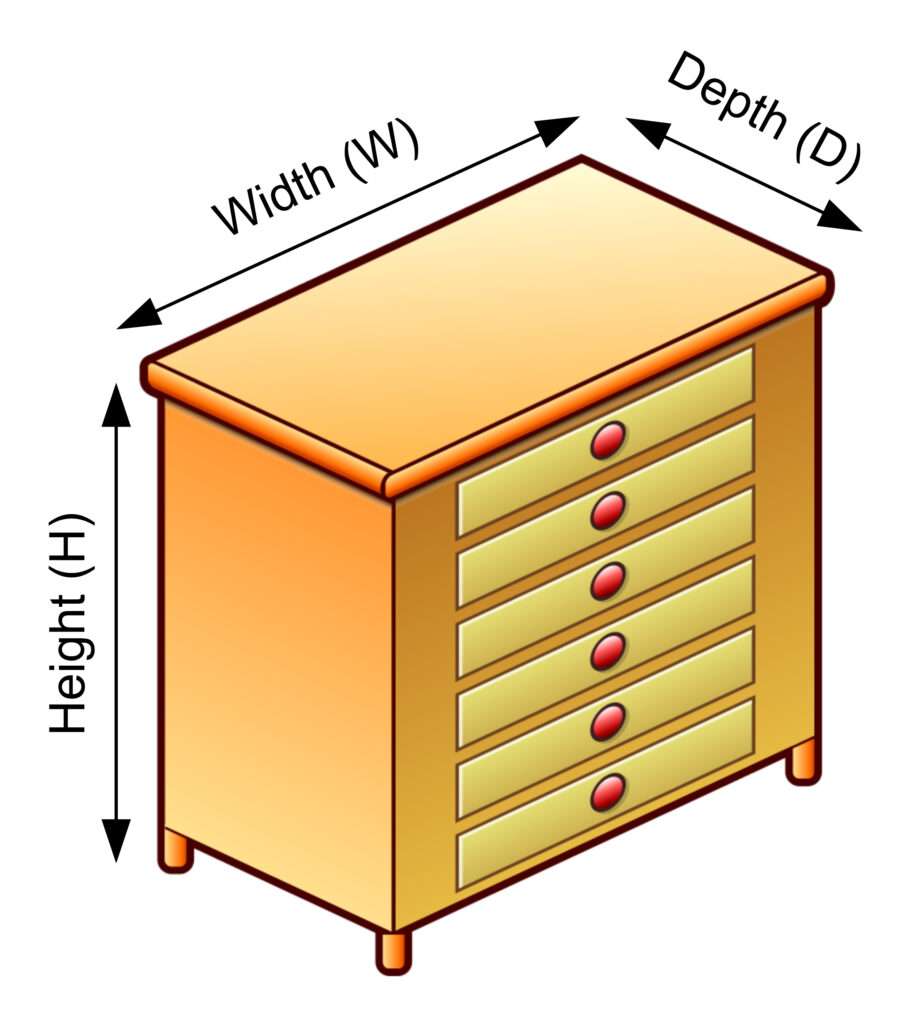
The dimensions of this dresser are 30 inches by 16 inches by 36 inches.
The first number is the width (W), the second number is the depth (D), and the third number is the height (H).
Another way to write the same measurements would be: 30″W x 16″D x 36″H. In this format, all of the dimensions are listed one after the other, separated by a space.
If a piece of furniture has a back or bottom, it is easiest to list the measurements for the front and sides first, followed by the measurements for the back/bottom.
How do I write dimensions on a drawing?
When writing dimensions on a drawing, you should be as specific as possible about where the measurements are located.
For example, when drawing a dresser on graph paper, you can write the dimensions of each individual drawer above it, rather than simply writing the total depth and width of the entire dresser.
This way, if there is any confusion about where your dimensions apply between your client or yourself, they will already be written out in specific locations on the drawing.
When should I use fractions instead of decimals?
In general, you should use fractions when writing measurements for furniture that are less than an inch, and use decimals when writing measurements for furniture that are an inch or more.
For example: 1/2 inch, 3/4 inch, 5 1/4 inches.
In some cases, you may find it easier to use fractions instead of decimals when measuring very small distances.
However, if a fractional measurement is too difficult to read or understand, it is best to convert it to a decimal measurement.
For example, 2 3/8 inches can be written as 2.375 inches.
RESOURCES
How to Write and Punctuate Measurements Correctly
